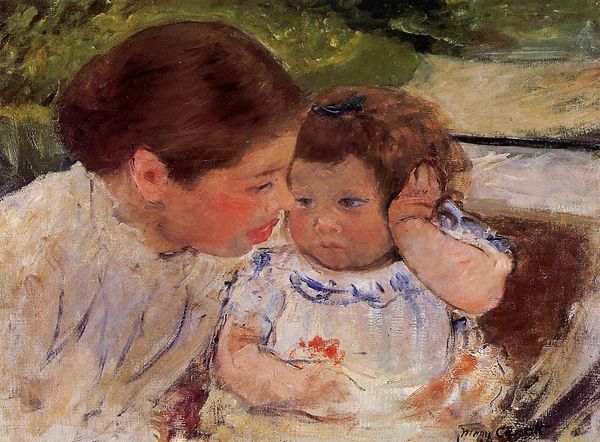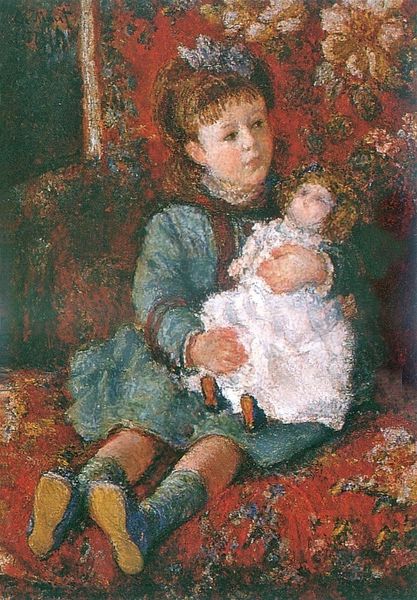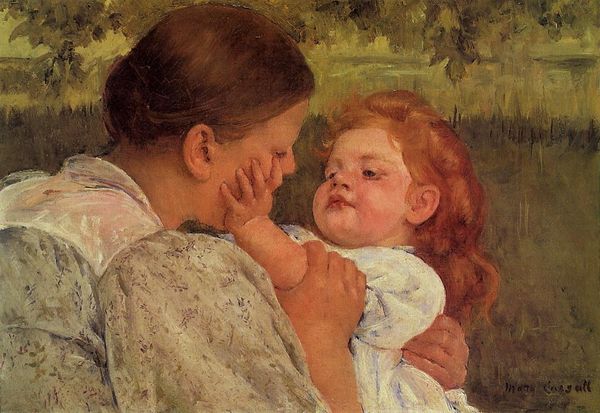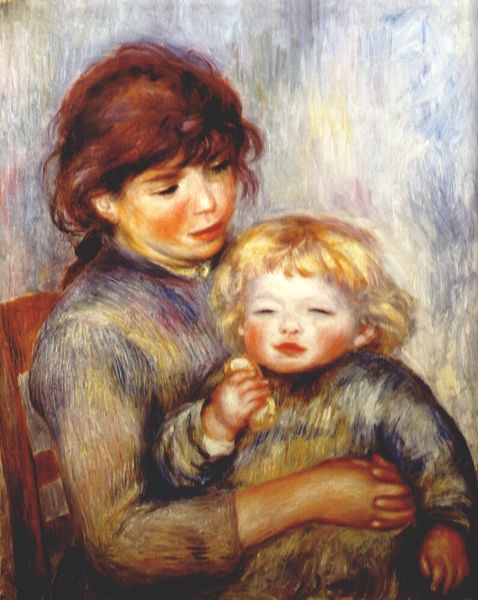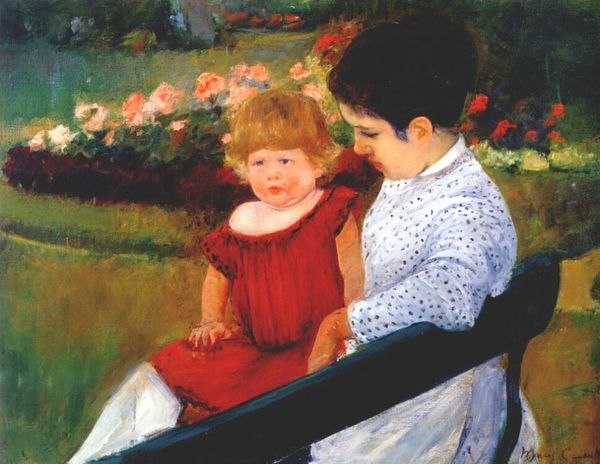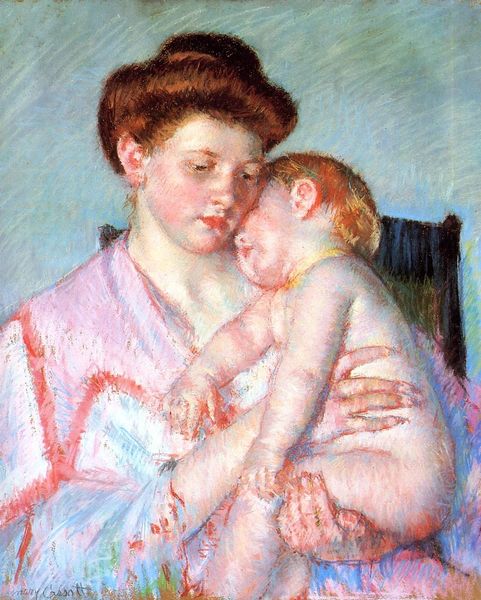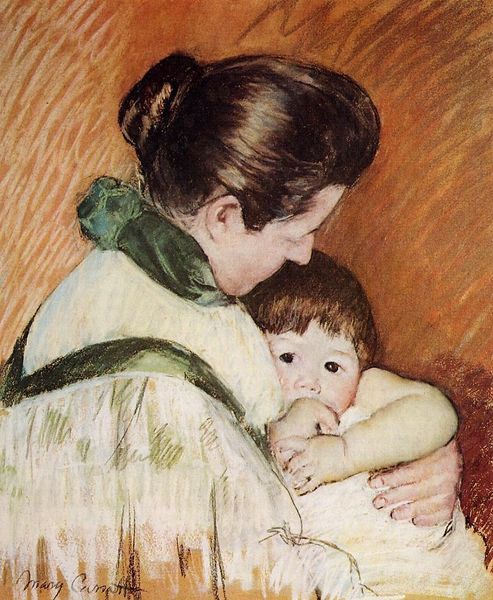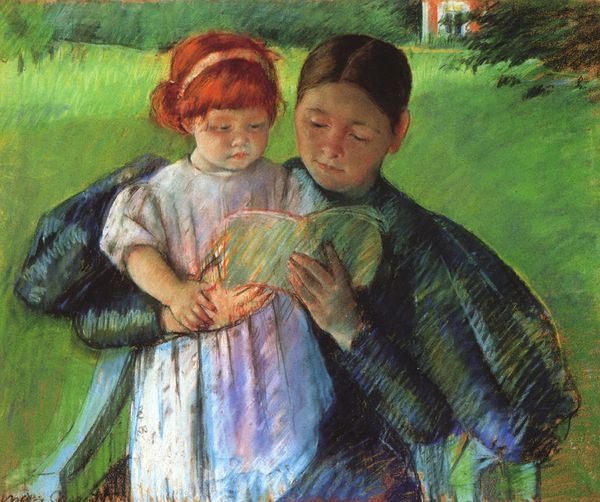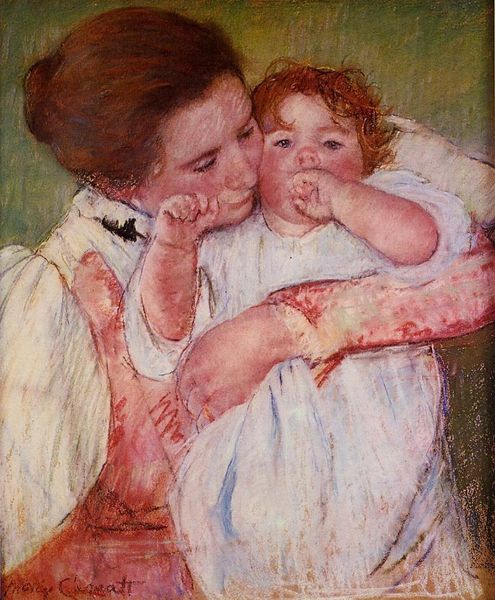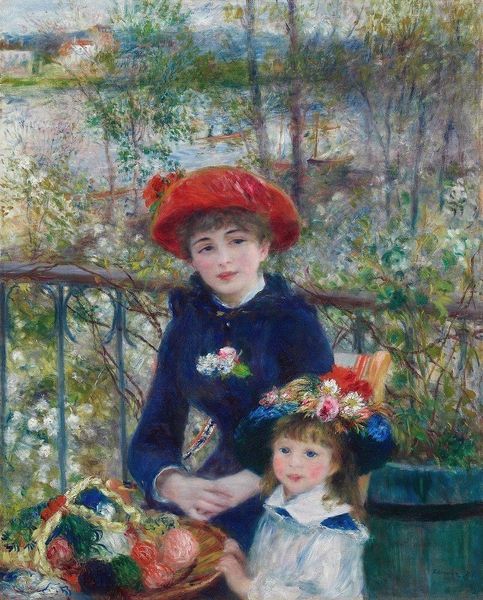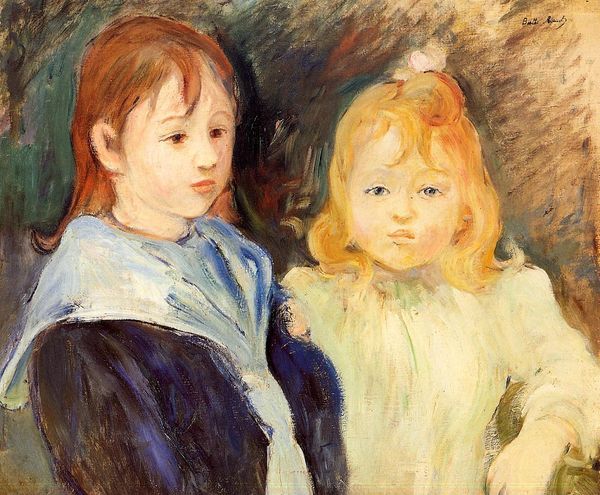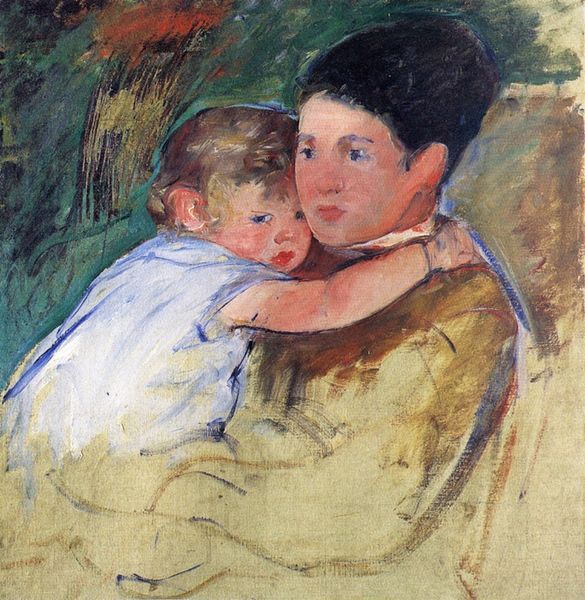
tempera, painting, paper, pastel
#
portrait
#
mother
#
tempera
#
painting
#
impressionism
#
figuration
#
paper
#
child
#
group-portraits
#
genre-painting
#
pastel
Copyright: Public domain
Curator: This artwork, titled "In the Garden," attributed to Mary Cassatt, is rendered with tempera and pastel on paper. It depicts a mother holding her child in what seems like a garden setting. What's your initial take on it? Editor: The impression it gives is overwhelmingly gentle. The soft colors, the mother's gaze... it's a very domestic, almost sentimental scene. But I also wonder if it’s *too* sentimental. Is there something more complex going on beneath the surface? Curator: I find Cassatt’s choice to represent motherhood worth examining through a feminist lens. Consider the context: she was a female artist navigating a male-dominated art world. Was she celebrating the domestic sphere or challenging its limitations? Editor: That’s a vital point. I see this piece as engaging in the established visual language of maternal imagery while subverting traditional expectations of women as purely domestic beings. Cassatt was never just celebrating something. She always also explored her ambivalences. Curator: Indeed. Cassatt positions the figures not just as objects of visual pleasure but as subjects actively engaged in the world, even within the confines of their social roles. How might this work function to either validate or critique norms within the Impressionist art world of the time? Editor: Art institutions of her time were invested in narratives of the feminine and the maternal that often overlooked female desire. Perhaps she’s intentionally echoing traditional Madonna and Child iconography, but with a modern, more nuanced perspective on the mother-child relationship. I read this scene of calm repose as more revolutionary. Curator: Yes, she presents an authentic vision of the complex relationship between a mother and child, sidestepping stereotypes to humanize their experiences. Editor: So ultimately this seemingly sentimental scene, crafted with soft colors and flowing lines, becomes a powerful statement on female identity, social expectations, and the mother-child relationship. Curator: Agreed. There are always socio-political messages conveyed even when that intention is to expose our reality in both life and society, whether overt or subtle. I value the depth it adds.
Comments
No comments
Be the first to comment and join the conversation on the ultimate creative platform.
